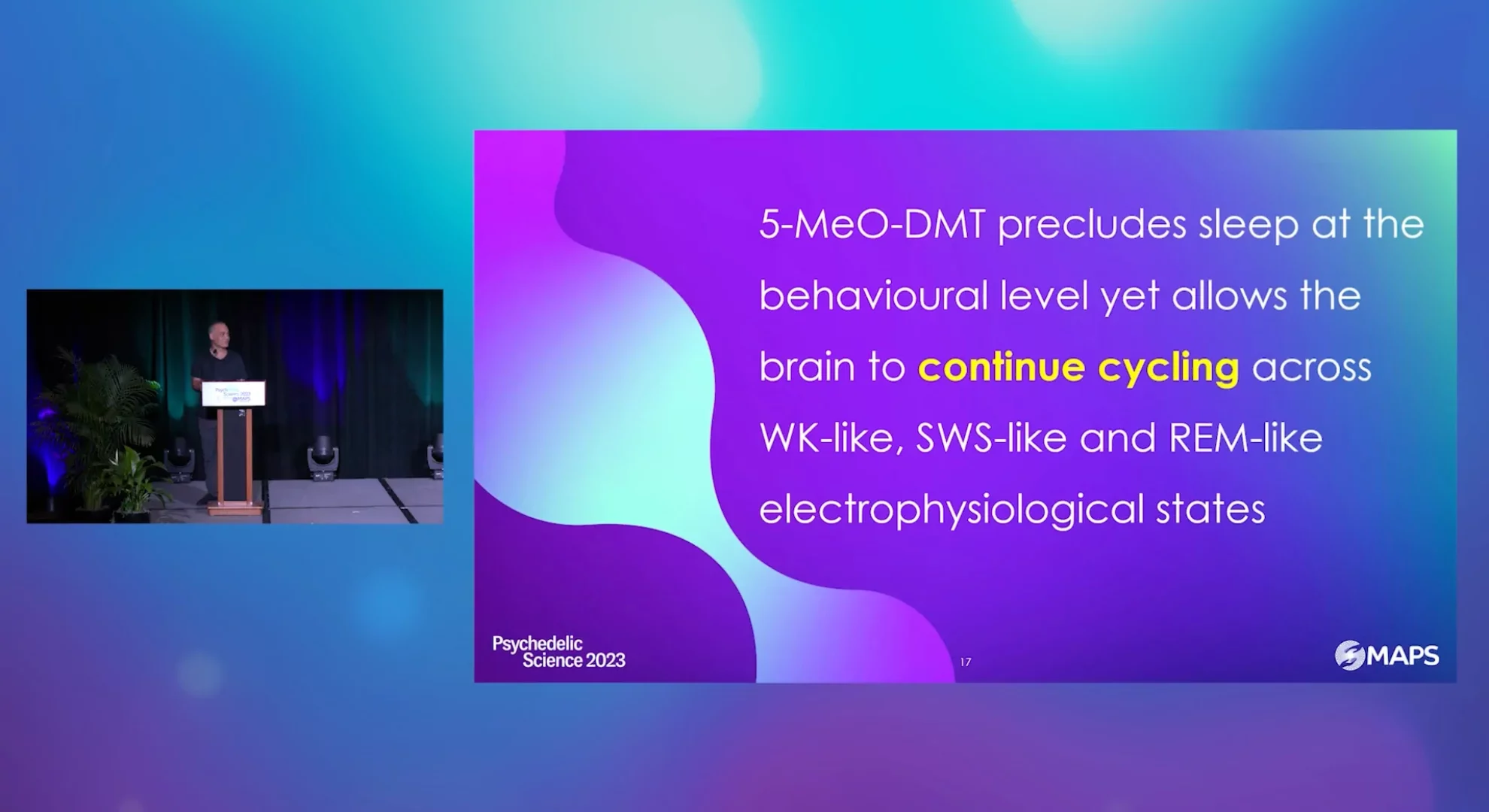
Sleep, Dreams, and Psychedelics
Psychedelics have a strange relationship with sleep and dreaming. While the waking experience induced by psychedelics shares several psychological and neuroanatomical features with dreaming, sleep is overall decreased, and the onset of rapid-eye-movement (REM) sleep is delayed, after the intake of psychedelics. The few electrophysiological studies currently available suggest that cortical field potentials during the psychedelic experience display features like those of slow-wave sleep (SWS), with increased power in the delta range (1-4 Hz) and reduced power in the theta frequency range (5-10 Hz). Notwithstanding, this claim is uncertain for lack of controls. First, the data derive solely from cortical data, without simultaneous recordings from the hippocampus, one of the most important sources of theta rhythm during both active waking and REM sleep. Further, these studies did not control for locomotion speed, which is positively correlated with theta power. I will present results from my laboratory and collaborators which directly address these caveats and reveal similarities with electrophysiological states observed during both SWS and REM sleep. These findings support the notion that the psychoactive effects of classical psychedelics reflect the combination of waking behavior with sleep-like neural activity.
Share: Sleep, Dreams, and Psychedelics
Facebook
Twitter
LinkedIn
Email




